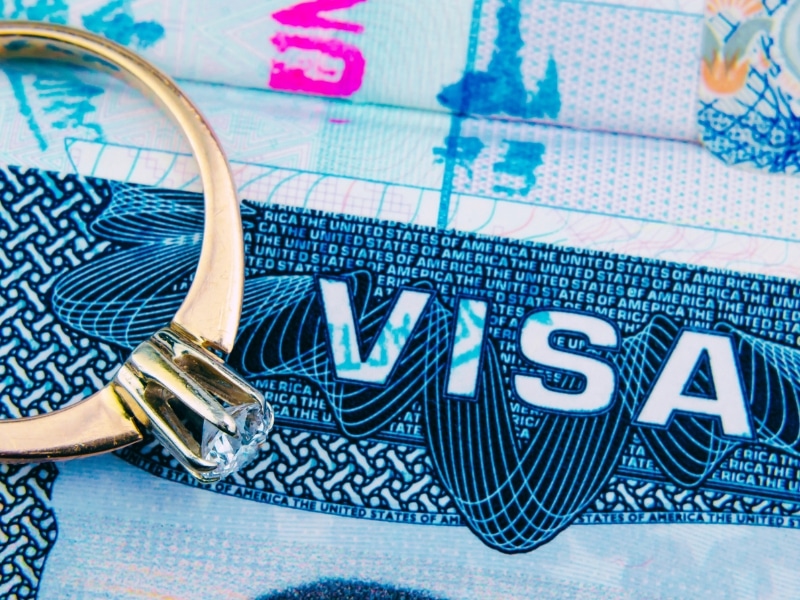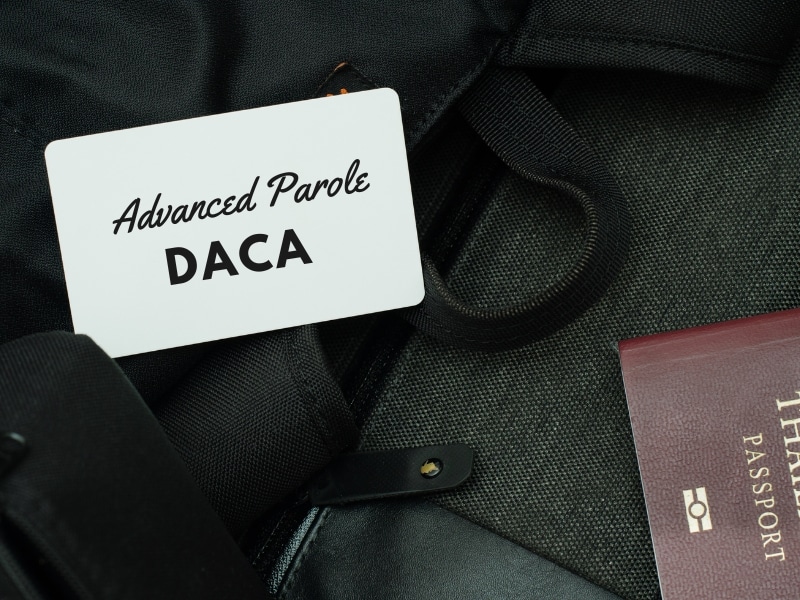
When considering a fiancé visa vs. spouse visa, there are certain things that immigrants should know, including their respective requirements, what to expect during the application process, and factors that can influence eligibility.
Here, you’ll learn all about these visa types and how their processes work for immigrants in Chicago.
What Are the Requirements for a Fiancé Visa?
If you or your partner want to enter the U.S. on a fiancé visa, you must meet several key requirements, including:
- The partner petitioning for this visa must have American citizenship at the time of seeking the visa. Otherwise, if the petitioning partner only has a green card and is a permanent resident, allowing entry for the other partner would require petitioning for a spouse visa.
- The petitioning partner must be able to show that your relationship is legitimate, with evidence such as a marriage certificate and other documentation proving its legitimacy.
- You and your partner must be able to marry legally, with both parties officially divorced from any previous spouses.
- Both parties must also show that they have had in-person encounters a minimum of one time within the previous two years upon filing.
How Long Do You Have to Get Married on a K-1 Visa?
If you obtain your K-1 fiancé visa—which is often erroneously called the K9 visa or K1 visa—after applying for it, the petitioned partner will have up to six months to enter the U.S. Once this partner is in the country, the couple will have a total of 90 days to get married before the fiancé visa is no longer valid. This time limit makes it ideal to get married as soon as possible after the initial approval of the visa.
Steps After Marriage
After getting married, the sponsored spouse has another 90 days to file Form I-485, Application to Register Permanent Residence or Adjust Status. Filing this form and getting it approved will enable the petitioned partner to legally stay in the country and gain conditional resident status.
After living in the country as a conditional permanent resident for two years, it will be possible for both spouses to file Form I-751, Petition to Remove Conditions on Residence. If U.S. Citizenship and Immigration Services (USCIS) approves this document, the spouse holding the green card will become a lawful permanent resident (LPR).
The Spouse Visa Process
If you want to bring a spouse into the country, there are two main steps you must follow, including:
- Petitioning — The petitioning spouse will begin by filing a petition via Form I-130 with all necessary documents that prove the legitimacy of the marriage, along with proof of either citizenship or LPR status.
- Applying for a Spouse Visa — The petitioning spouse will then file Form DS-260, Immigrant Visa Electronic Application. This document will require supporting documentation, including proof of the marriage’s legitimacy and the sponsored spouse’s qualifications for a spouse visa. The petitioned spouse will then need to visit a U.S. consulate or embassy to undergo an interview in his or her country of origin, where an official will question the interviewee about the marriage and other aspects pertaining to the visa.
Options for Bringing Your Spouse to the United States
Unlike when both partners are unmarried and want to enter the country on a K-1 visa, it’s possible for the sponsoring spouse to bring his or her partner into the U.S. if he or she possesses a green card or U.S. citizenship.
Different forms will apply depending on whether the petitioning spouse is a green card holder or American citizen and whether the petitioned spouse is currently in or outside the U.S. USCIS can provide guidance on this.
What Are the Current Processing Times for a Spouse Visa?
The amount of time it takes to obtain a spouse visa will depend on different elements. For example, the availability of the visa may decrease if many people from the foreign spouse’s country are attempting to obtain the same type of visa, creating a backlog. Other factors may also influence the length of time it takes to get a response from USCIS, including requests from the government for additional supporting documentation and backlogs at the foreign spouse’s nearest consulate or embassy.
Factors to Take Into Consideration Before Choosing Your Visa
Generally, if you are currently married to your partner, you would want to obtain a spouse visa that allows the foreign partner to enter the U.S. If you are still unwed but intend to get married and are engaged, a fiancé visa would be the right decision. However, there are other visa options available if you don’t want to choose these visas, either.
Here are some other factors to consider when choosing a visa.
Which Types of Visa Allows for Travel in and Out of the United States?
First, consider whether you or your partner intend to travel in and out of the U.S. on the requested visa.
On a K-1 visa or spouse visa, the foreign partner will only be able to enter the country one time, preventing him or her from leaving the country while in possession of this visa. However, partners with either visa will have the option of filing for advance parole with USCIS, which would enable the visa holder to leave and re-enter the country freely. If the visa holder has an emergency reason for leaving the country, such as family emergency abroad, it will take less time to process advance parole. Normally, it will take USCIS around two to three months to process an advance parole request, making it important to apply for it as early as possible.
Individuals can also apply for IR1 or CR1 visas, which open up the path to LPR status once the visa holder enters the country. Gaining LPR status would allow the person to freely enter and exit the U.S. as needed.
Another option is the K-3 visa, which is a type of nonimmigrant visa that enables visa holders to enter and exit the country without a K-1 or spouse visa.
There are other types of visas that allow nonimmigrant visitors to enter and exit the country if you don’t want to seek a spouse or K-1 visa. For example, B-2 tourism visas allow nonimmigrants to enter the country temporarily for tourism purposes, while B-1 visas allow individuals to enter the country on temporary business. Some people may also apply for both visas to allow for work and tourism while staying in the country.
Location Where the Marriage Takes Place
Where you want to get married will also determine which type of visa to choose. If you want to get married in the U.S., a K-1 visa allows for this. On the other hand, if you want to get married abroad, you will only be able to do so with a spouse visa.
How Much Does a Visa Cost?
You will also want to consider how much you are willing to spend on a visa. K-1 fiancé visas tend to cost more than spouse visas, but the price can vary depending on the nature of the application.
To give you a rough estimate, it can cost around $1,200 to $2,500 for a spouse visa, while you’re more likely to spend upwards of $2,000 to $3,000 on a K-1 visa.
The Time of the Marriage
One more factor to think about is when you want to get married to your partner, if you’re engaged. You might decide to wait a while before getting married and ensure your relationship is healthy. In other cases, couples may want to get married shortly after their engagement.
The sooner you plan to marry, the more likely it will be that a spouse visa is the right option. Conversely, you might want to get a fiancé visa if you plan to wait for a period of time before getting married.
You can get married abroad in the foreign partner’s country of origin before petitioning for a spouse visa.
Make the Right Choice of Visa for You and Your Partner
Depending on your circumstances and the nature of your relationship with your partner, you may choose either a K-1 fiancé or spouse visa. However, the right choice of visa and the application process aren’t always clear.
If you need help with applying for these or other types of visas, a fiancée K1 visa lawyer may be able to help. Not only will he or she provide some guidance during the application process, but he or she may also help with immigration adaptation to American culture when bringing the foreign partner into the country. Choosing either a K-1 or spouse visa allows you and your partner to enjoy a happy life as a couple in the U.S.







